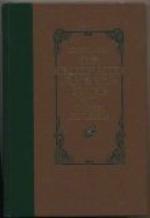|
This section contains 7,229 words (approx. 25 pages at 300 words per page) |

|
SOURCE: "The Art and Satire of Twain's 'Jumping Frog' Story," in American Quarterly, Vol. 16, No. 4, Winter, 1964, pp. 562-76.
In the following essay, Krause claims that Twain 's jumping frog story combines Eastern political satire and traditional folk humor.
Recent analyses of Mark Twain's "Notorious Jumping Frog of Calaveras County" tend to stress its projection of the traditional conflict between eastern and western values—or, more precisely, between the values of a gentle, civilized class and those of the frontier.1 Taking in its broadest potential reference, Paul Schmidt has seen the "Jumping Frog" as dramatizing those assumptions which, as he has it, "Make up the complicated Enlightenment case of Civilization versus the West." Moreover, construing the tale as "An attack on the genteel tradition," Schmidt holds that it "ultimately asserts the superiority of vernacular brotherhood over the competitive individualism which animates genteel attitudes"; while in Wheeler's story, the tale...
|
This section contains 7,229 words (approx. 25 pages at 300 words per page) |

|


